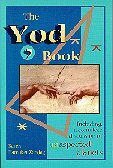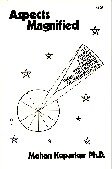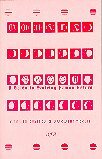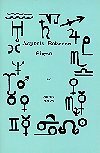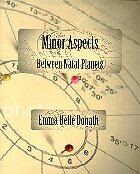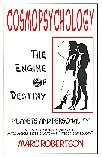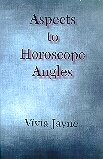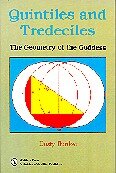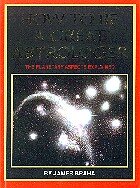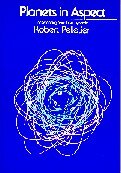Back a few years ago, minor aspects were one of two key ways of reading a chart, because back a few years ago astrologers did not have a lot aside from bodies and the aspects they made. Twentieth century astrology had slowly ground itself into bodies and aspects in an effort to be "scientific," which meant repudiating houses and signs, as there was no "scientific" evidence that houses and signs existed.
The late Emma Belle Donath was a leader in both of these areas. She promoted asteroids as well as minor aspects. The book starts with an overview of planetary cycles, which is to say that Saturn hath the 7th, 14th, 21st and 29th years (etc.), that Jupiter has multiples of 12, that Uranus pops up at 40 and 80. Emma Belle develops this in the Introduction, when, for example, at age 21, Saturn, Jupiter and Uranus are square to themselves, and Neptune is semi-square to itself. This is termed Coming of Age and is one of a series of predictable events in life.
While the book covers all aspects, the chapters on the traditional Ptolemaic aspects (60, 90, 120, 180) are brief. Efforts are focussed on the minor aspects. In particular, complete sets of delineations are given for the following:
- Vigintiles 18
- Semisextiles 30
- Noviles 40
- Semisquares 45
- Quintiles 72
- Sesquiquadrate 135
In each case, complete sets are given, Sun through Pluto, including the four major asteroids, Ceres, Pallas, Juno and Vesta. These delineations range from the pedestrian:
Sun Vigintile Moon: On one plane this native walks in the essence of what is called the true spiritual Sun. In more mundane situations he or she focuses on intimate surroundings. This person is emotionally very sensitive but not sophisticated in the ways of the world. (pg. 12)
to the nuanced, presumably based on actual observation:
Mercury Vigintile Venus: This often found aspect occurs in the natal horoscopes of persons having pleasant, well-modulated voices for public speaking. This native is usually concerned with the use of color, whether in clothing worn or designed or in tones used throughout a home. He or she seems extremely aware of the changing seasons of the year. There is the ability to know how to "play on the heart strings" of friends and acquaintances. (pg. 15)
I knew Emma Belle slightly. She was a Gemini. Her mind raced at a thousand miles a second. (As does mine.) She was brilliant. She in fact nailed a lot of this stuff. Nailed it to the wall.
Regrettably, no matter how hard astrologers tried to be "scientific," no matter how much they stripped astrology of "ancient superstition," science (or what passes for science) refused to accept astrology as legitimate. Our efforts were in vain and so far as many of us could tell, would always be in vain, such was the vehement hostility of science. At some point in the early 1990s, sheer weariness, combined with excitement from the horary camp, led to the rediscovery and embrace of actual astrology. Which, to our surprise, was a vastly rich area, full of nuance and detail and which did not need extra bodies or, for the most part, fancy aspects. While many are still stuck in the bodies and aspects camp, there are many more who have embraced the past (embraced true astrology) and have no regrets.
Yet the effort to more fully develop aspects was not in vain. As it turns out, the square hid many useful sub-aspects, among them the semi-square (45), the semi-octile (22.5), and the sesquiquadrate (135). These are especially useful in forecasting. The semi-sextile (30) and inconjunct (150), both based on 30, have also entered the mainstream, primarily as natal influences.
I have since turned astrology upside down, with the premise that astrological energies, eg, signs, do not radiate down upon us from an empty sky, but are instead generated by the six-sided crystal at the center of the earth itself. The earth's crystal radiates raw astrological energies outward. From the ground up. We are soaked in them. At four times a year this crystal aligns itself with the Sun (solstices and equinoxes), thus establishing the primacy of the Tropical Zodiac. And as with the earth, so, presumably, with all the other planets. All are giant crystals, and astrology is nothing more than the study of the interactions of the various planetary crystals. The Earth's crystal further aligns with the Sun on a daily basis: Sunrise, sunset, noon and midnight, thus establishing houses. With this as an essential groundwork, we establish the central importance of the planet-sign-house triad, their rulers and their rulerships, and immediately restore Morin in particular and medieval astrology in general. The result is a non-aspect-based system of staggering power, as I have demonstrated in my weekly newsletters, and in my various books extracted from them (see Roell in the author listings). In effect, the problem was never "science," but our own inadequate understanding of terrestrial realities. Expand our understanding and suddenly a huge window opens and the clear, bold sunlight of astrology shines down upon us. Am I excited? Yes I am! I will seize every opportunity to promote it.
For those who want a greater understanding of the six aspects named above, this will be an invaluable book.


 Indicates a book on our Top Ten list. If you would like to find more books like it, click on the star.
Indicates a book on our Top Ten list. If you would like to find more books like it, click on the star.


